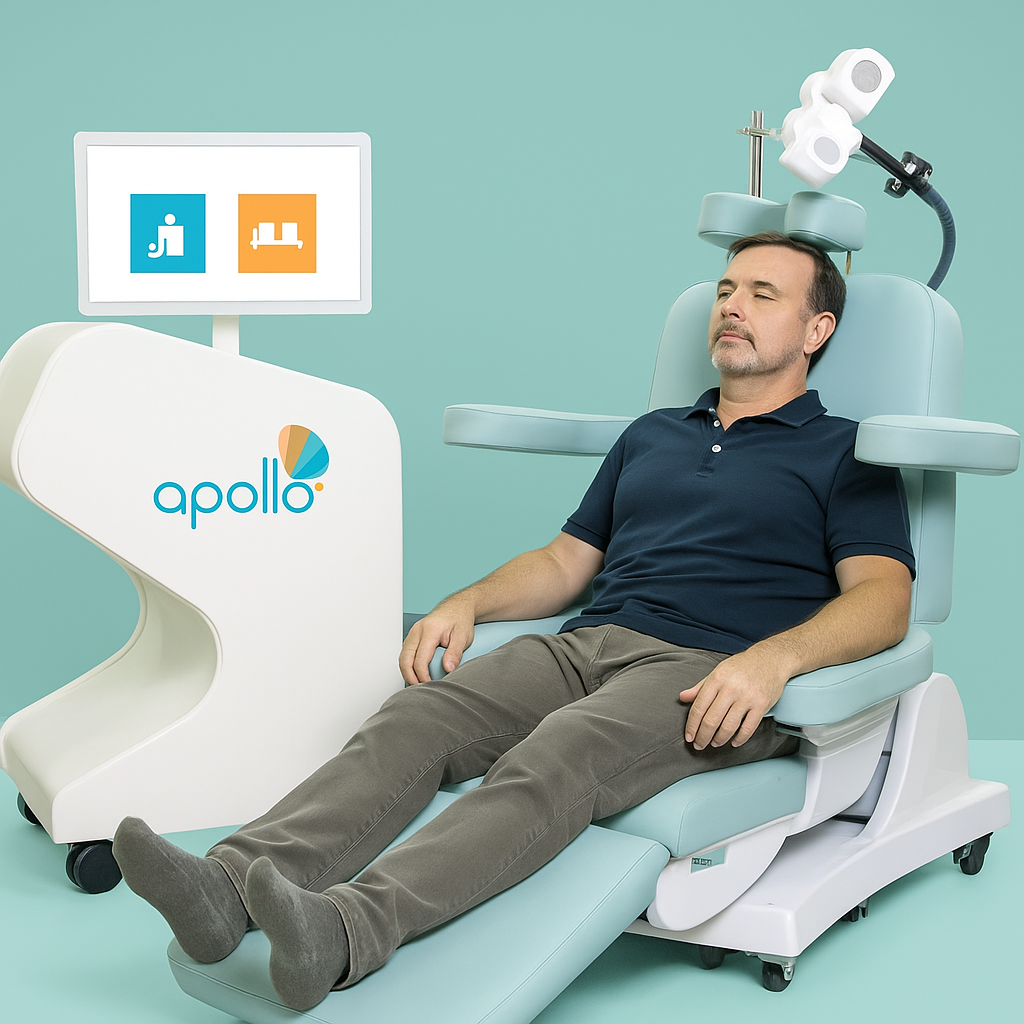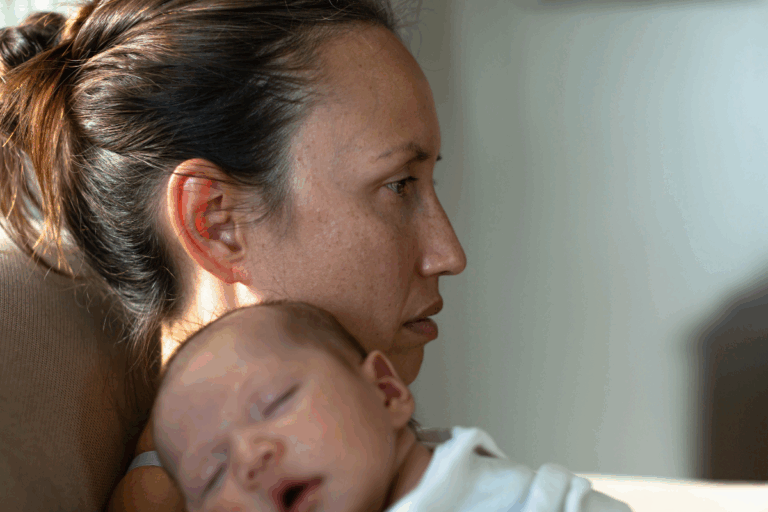
Depression affects millions of people worldwide, and for some, traditional treatments such as medication and therapy may not provide sufficient relief. Transcranial Magnetic Stimulation (TMS) has emerged as an evidence-based, noninvasive option that targets brain regions associated with mood regulation. This approach is particularly useful for individuals with treatment-resistant depression.
What is TMS Therapy?
Transcranial Magnetic Stimulation (TMS) is an outpatient procedure that uses an electromagnetic coil placed on the scalp to deliver magnetic pulses to specific areas of the brain. These pulses generate small electrical currents that modulate neuronal activity without the need for anesthesia or surgery. Sessions typically last 20–40 minutes and are administered daily over several weeks. TMS is FDA-cleared for major depressive disorder and has shown effectiveness in individuals who have not responded adequately to other treatments.

Where Does TMS Target for Depression?
The primary target for TMS in depression is the left dorsolateral prefrontal cortex (DLPFC), a brain region associated with executive function and mood regulation. Research has shown that in depression, the DLPFC tends to be underactive, while deeper limbic areas such as the subgenual anterior cingulate cortex (sgACC) are overactive. Stimulating the DLPFC helps rebalance this network, improving symptoms of depression. Advanced techniques now allow for more personalized targeting based on individual brain connectivity, which may further enhance treatment outcomes.
What Happens to the Brain During TMS?
When the coil delivers a magnetic pulse, it creates a small electric current in the underlying cortical tissue. This current alters neuronal excitability, making neurons more or less likely to fire depending on the stimulation pattern. Over repeated sessions, these changes encourage synaptic plasticity and adjust connectivity between brain regions involved in mood regulation. High-frequency stimulation of the left DLPFC, for instance, increases activity in this area and reduces hyperactivity in connected limbic regions, contributing to improved mood and reduced depressive symptoms.
Benefits of TMS Therapy for Depression
TMS has shown significant effectiveness in treating major depressive disorder, especially in individuals who have not responded to medication. According to a large meta-analysis, response rates for TMS are approximately 40–60%, with remission rates around 30–35%. One of the key advantages of TMS is its noninvasive nature and the absence of systemic side effects often associated with antidepressant medications, such as weight gain or sexual dysfunction. TMS also avoids the cognitive side effects sometimes associated with electroconvulsive therapy (ECT), offering a less invasive alternative for patients.
What to Expect During a TMS Treatment Session
A typical TMS session begins with an evaluation to determine eligibility. The first session involves calculating the treatment location and calibrating the stimulation intensity by identifying the motor threshold — the point at which stimulation causes a small muscle twitch in the right hand. Following this, daily sessions (M-F) are scheduled for 7 weeks (36 sessions). During each session, patients remain awake and seated, experiencing a tapping sensation on the scalp. Mild headaches or scalp discomfort are the most commonly reported side effects, and these usually resolve with time or over-the-counter pain relief.
Risks and Side Effects of TMS
TMS is generally well tolerated, with the most common side effects being scalp discomfort and headaches. The risk of seizure exists but remains extremely low when guidelines are followed. Proper screening is essential to rule out conditions that increase seizure risk, such as a history of epilepsy, recent head trauma, or incompatible medical implants.
Who is a Candidate for TMS?

TMS is indicated for adults and adolescents down to 15 years old with major depressive disorder who have not achieved sufficient improvement with medications or therapy. Contraindications include the presence of metallic implants in or near the head (such as aneurysm clips or cochlear implants), active seizure disorders, or other specific medical conditions.
Final Thoughts
TMS therapy offers an important treatment option for individuals living with depression that has not responded to other interventions. By directly targeting the brain circuits involved in mood regulation, TMS can provide relief without the side effects of systemic medications.
Responsibly edited by AI
Frequently Asked Questions (FAQ)
Is TMS therapy painful?
Most patients describe the sensation as tapping on the scalp. Some may experience mild discomfort or headaches, but these typically lessen over time.
How long does it take to see results from TMS?
Many patients begin noticing improvement after 2–3 weeks of treatment, though full benefits are usually assessed after completing the full course.
Can TMS be combined with medication or therapy?
Yes. TMS is often used alongside medications and psychotherapy, and this combined approach may improve outcomes for some patients.
Are results from TMS permanent?
While many patients experience long-term relief, some may require maintenance sessions or follow-up treatments if symptoms return.
Does insurance cover TMS therapy?
Most major insurers, as well as Medicare, cover TMS for treatment-resistant depression when criteria are met. Coverage details vary by plan.
Who should not undergo TMS?
Individuals with certain metallic implants in or near the head, or those with a history of seizures, may not be suitable candidates. Some psychiatric diagnoses are also contraindicated such as bipolar disorder and psychosis.
Other Blog Posts in
Animo Sano Psychiatry is open for patients in North Carolina, Georgia and Tennessee. If you’d like to schedule an appointment, please contact us.
Get Access to Behavioral Health Care
Let’s take your first step towards. Press the button to get started. We’ll be back to you as soon as possible.ecovery, together.





